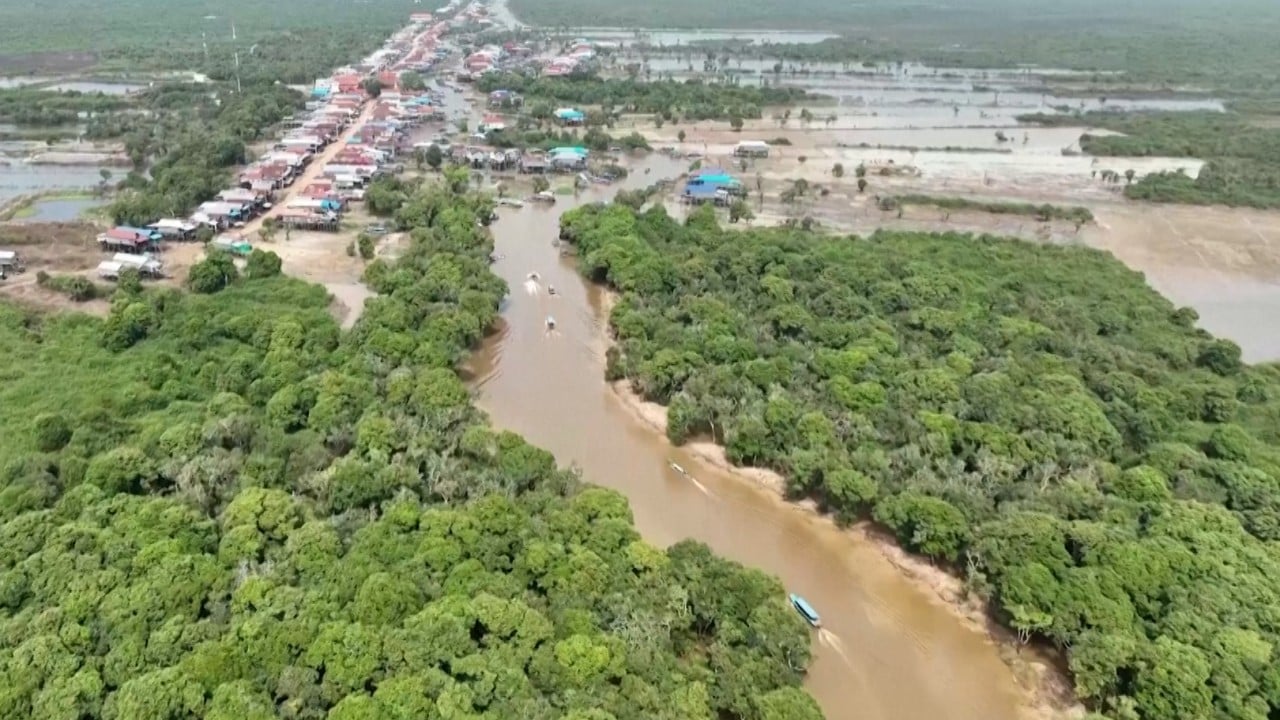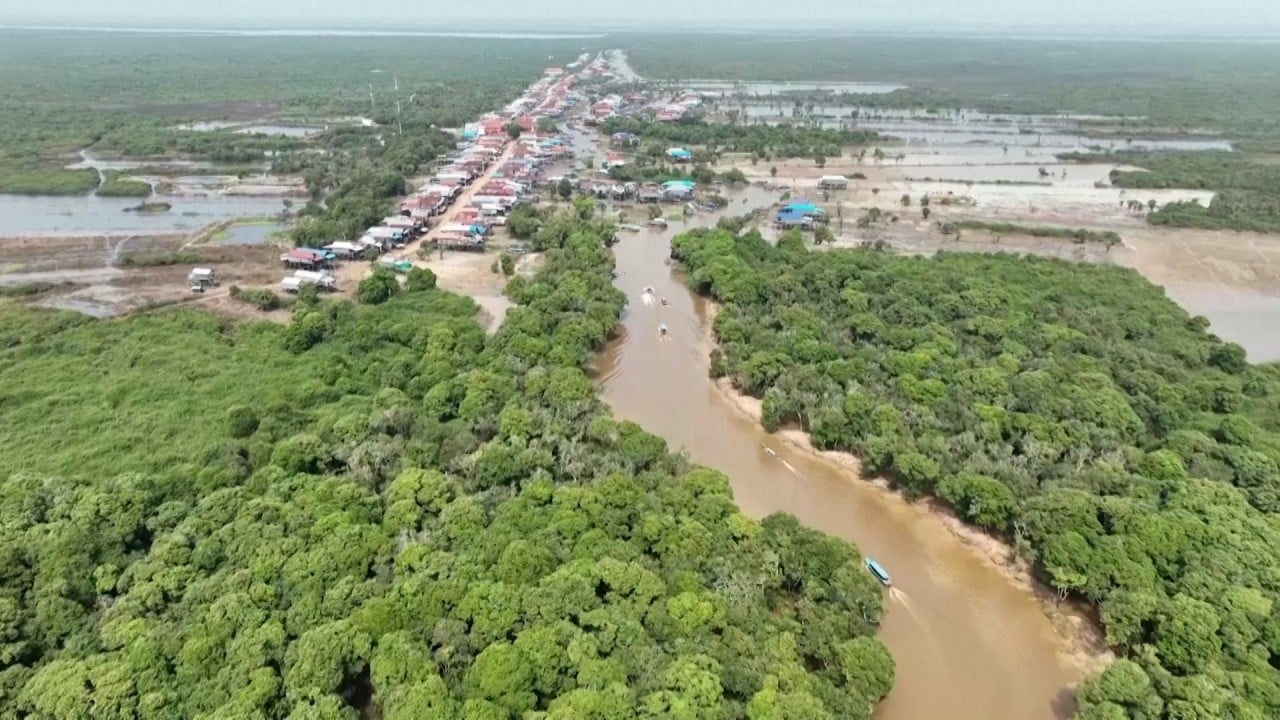A China-backed canal in Cambodia could push neighbouring Vietnam closer to the US, Chinese observers have warned.
Hanoi might then be inspired to take a tougher stance against Beijing in the disputed South China Sea, one of them said, while another called for “wisdom” on both sides to minimise shocks to ties.
Phnom Penh will hold a groundbreaking ceremony on Monday for the Funan Techo canal, a 180km (112-mile) project expected to reduce Cambodia’s transport dependence on Vietnam.
The US$1.7 billion waterway, which will connect the Mekong River to the Cambodian coast, is expected to be partially funded by China.
Cambodian Prime Minister Hun Manet called the waterway a “historic” project, saying it aimed to ensure the Southeast Asian nation could “breathe through our own nose”.
However, the project has triggered waves of friction over the past few months with eastern neighbour and fellow Asean member Vietnam, which has repeatedly voiced its concerns over water security and the likely impact on its “rice bowl” Mekong Delta region.
The United States has also urged greater transparency from Cambodia, citing the project’s “potential implications for regional water management, agricultural sustainability and security”.
In addition, Chinese investment has raised questions over whether Beijing would take advantage of the canal to amplify its clout with “ironclad” friend Cambodia, and even use it to expand its military presence in Southeast Asia.
The US has repeatedly expressed concerns over what it sees as the growing influence of China’s military in Cambodia, including its support for the redevelopment of the Ream naval base on the Gulf of Thailand.
Cheng Hanping, a senior research fellow at Nanjing University’s Collaborative Innovation Centre of South China Sea Studies said the project had been “attacked by rumours” from Vietnam and the US.
He said it was obvious that Funan Techo would impact Vietnam’s earnings from Cambodian ship transits, but there was not enough “scientific data” yet to conclude that the canal would affect downstream flows and the Mekong River ecosystem.
“I think it is untenable to claim now that it will have [any such] impact,” Cheng said.
However, the US would view a further strengthening of China’s bonds with Cambodia as a “reduction” of American influence in the region, he warned.
Zhou Chao, a researcher with the Beijing-based independent think tank Anbound, was of a similar view.
Funan Techo could help China expand its economic and geopolitical influence in Cambodia and even across Southeast Asia, which is not something the US wishes to see amid intense regional rivalry between the two powers, he said.
Vietnam would also be reluctant to lose its own leverage in the Cambodian economy, Zhou said, given its maritime disputes with China and alleged ambition for “dominance in mainland Southeast Asia”.
“Regarding the controversy [with Cambodia] over the canal, environmental protection or other arguments are not substantial reasons,” Zhou said. “Fundamentally, it is the wariness and resistance of the US and Vietnam towards the continuous rise of China’s influence.”
The project was likely to bring the US and Vietnam closer and lead to a stronger Vietnamese stance against Beijing in the South China Sea, he said, while urging the Chinese side to be mentally ready for this scenario.
Vietnam, a fellow communist state, has drawn closer to the US in recent years amid a deepening rift with Beijing over the latter’s expansive claims in the South China Sea. Last month, Hanoi drew protests from Beijing after it filed a claim with the United Nations for an extended continental shelf in the disputed waters.
Funan Techo will be Cambodia’s first water transport project to connect the Mekong with sea routes. It will run from the Cambodian capital Phnom Penh – a riverside trading hub – to its ports on the Gulf of Thailand.
The project was approved in May last year by the then Cambodian cabinet led by former prime minister and Hun Manet’s father, Hun Sen. Cambodia is one of China’s closest partners among the 10-member Association of Southeast Nations, and Beijing funded billions of dollars worth of infrastructure during Hun Sen’s four decades in power.
China Road and Bridge Corporation (CRBC), a state-owned firm, signed an investment framework agreement on the canal with the Cambodian government in Beijing in October.
The project is expected to take about four years to complete, and will include at least 11 bridges and three water gate systems.
Rising in western China, the Mekong passes through five other countries before draining into the South China Sea on the Vietnamese border.
The 4,350km waterway is vital to regional cross-border shipping. About 33 per cent of Cambodia’s global cargo throughput uses Vietnamese ports via the Mekong River.
The aim with Funan Techo is to trim that freight to 10 per cent, Cambodian deputy prime minister Sun Chanthol told Reuters in May.
He also sought to downplay Vietnam’s environmental concerns, saying the canal would consume less than 1 per cent of the Mekong’s water flow.
CBRC initially pitched the project as an “important achievement” of docking China’s infrastructure-led Belt and Road Initiative with Cambodia’s national development strategy.
But Hun Sen, who now heads the Cambodian Senate, said in May that the canal had been initiated entirely by Phnom Penh. It was not a part of China’s belt and road strategy, he said, rejecting speculation that it would be used to transport Chinese warships.
In March, Vietnam’s state-backed Oriental Research Development Institute cited experts as highlighting the risk of the canal becoming “dual-use” – with Chinese military ships using it to travel “deep into Cambodia’s interior and approach closer to” the border with Vietnam.
Several analysts have challenged the view, saying the canal would be unable to carry large naval hardware or move vessels covertly.
“Vietnam will not distance itself from Cambodia due to the canal,” Cheng at Nanjing University said. “As to whether it will affect China-Vietnam relations, that will require both sides to show wisdom.”
He suggested that China share detailed data, particularly on environmental assessments and water flows, with Vietnam. This would “clarify their misunderstandings” and prevent them from “being instigated and exploited by forces outside the region”, he said.
Cheng also called on Vietnam to approach the issue with a “scientific attitude” instead of interpreting China’s support for the Cambodian canal, along with its Ream naval base, as driving a wedge between the Southeast Asian neighbours.
“If you sing the same tune as forces outside the region, it will definitely affect China-Vietnam relations,” he warned, in a likely reference to the US.
Beijing appears to have maintained a low profile on the matter so far.
According to a Cambodian statement, Chinese Foreign Minister Wang Yi “affirmed support” for Funan Techo when he met his visiting Cambodian counterpart Chenda Sophea Sok in May.
But Beijing’s statement only read that China would “assist the Cambodian side in actively exploring the idea of an integrated water conservancy project”.
Also, while Phnom Penh said in October that the CRBC deal had paved the way for the company to study the project in detail for eight months, this was not mentioned in the CRBC statement.
In early June, Hun Manet said the canal was no longer a fully foreign-invested project, as Cambodian enterprises held a 51 per cent stake.
Zhou of Anbound said China should be wary of likely suppressive measures from the US and Vietnam over the canal.
“Both political and economic [measures] should be analysed in depth and responded to as early as possible,” he said, cautioning that China should be fully aware of the “stubbornness” of Vietnam’s confrontational stance.



